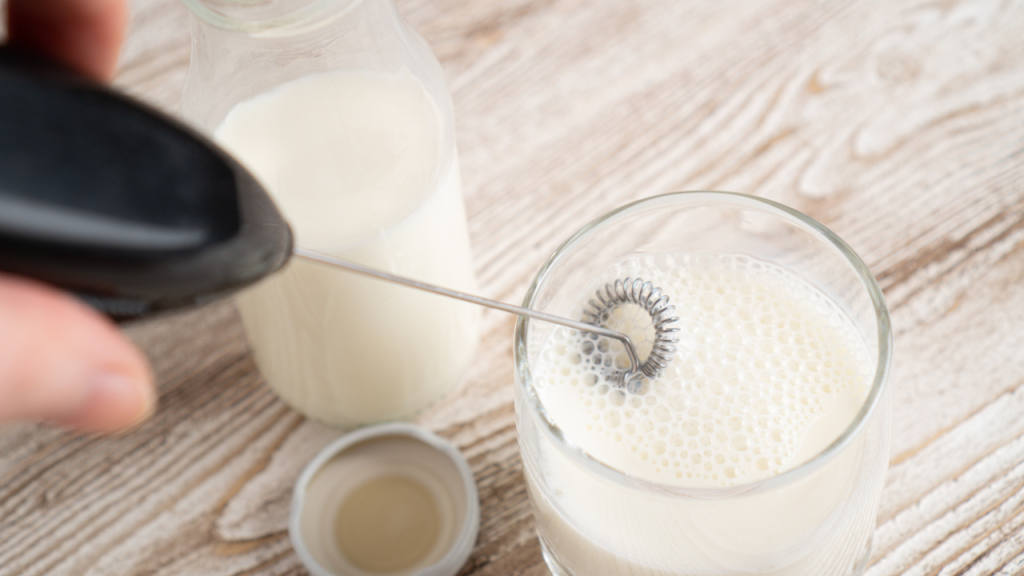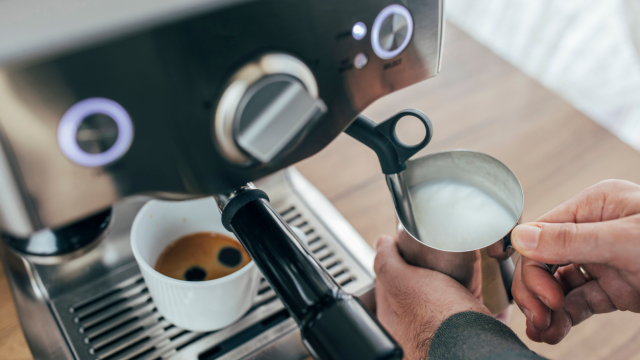If you’re a lover of a milky coffee, you’ll know that the quality of your frothed milk can make or break your brew. And if you’re someone who sips on plant-based milk, you’ll also be aware that it can be particularly tricky to get froth right when you’re not working with dairy.
From curdled messes to too many bubbles, there’s a myriad of ways to get plant-based froth wrong. And further to that, there are so many plant-based milk options available, it’s hard to know what’s going to taste the best.
To help us out, Mitch Monaghan, Nespresso Coffee Ambassador, gave us some handy tips on how to perfectly froth plant-based milk for coffee.
How to froth plant-based milk
What’s the difference between dairy milk and plant-based milk for coffee?
Obviously, a big difference is the fact that one comes from dairy animals and the other from plant-based alternatives.
But there’s also a really big difference in the tastes of the milk varieties, which Monaghan said comes down to personal preference.
“As a rule of thumb, dairy milk is higher in fat and protein content which makes it easier to deliver a full and thick foam. It’s also the ultimate all-rounder which can be paired with light to dark roasted coffee blends to create perfectly balanced coffees,” Monaghan said.
However, dairy alternatives are on the rise in Australia, with 29 per cent of Aussies pairing their coffee with plant-based milk like oat, soy and almond.
So, are they as good as dairy milk in coffee? Monaghan thinks so.
“Plant-based milks vary in flavour profile, texture, and ease of frothing due to their different fat and protein contents and that they are made of mostly of water.”
“They all make for delicious cafe-quality coffees at-home. Just make sure you’re armed with the right equipment and high-quality coffee,” Monaghan said.

What plant-based milk is the best for frothing?
Obviously, we had to ask Monaghan which plant-based milk he thought was best for frothing, but he was diplomatic in his response.
“Plant-based milks bring out different notes and flavours in coffee, especially when you consider the varying flavour profiles of oat, almond and soy milk, and other alternatives. Taste all comes down to preference, so I wouldn’t say some are better than others.”
He did, however, give us a simple guide when deciding which plant-based milk is best for us.
- Oat milk: Carries a largely neutral flavour profile with a creamy texture which many consider is most like dairy milk. It froths better than other plant-based alternatives, so it’s my top pick for the closest taste to dairy.
- Almond and soy milk: These tend to make a coffee with a rich, sweet and nutty profile. It’s recommended using (sic) these two with coffee blends with a stronger roast.
Top tips on frothing plant-based milk at home
According to Monaghan, anyone can perfect the art of frothy non-dairy milk at home, provided they have access to the right equipment.
This can either be a steam wand or Nespresso’s Aeroccino3 milk frother.
When using a steam wand to froth milk, Monaghan thinks it’s best to hold the jug steadily and avoid the unnecessary jug bob. According to Monaghan, the Nespresso Creatista machine is designed to sit at the right distance from the base of your milk jug to avoid the bob.
Monaghan’s next tip was to not heat your plant-based milk as much as dairy milk.
“The ideal frothing temperature for dairy milk is between 60-65 degrees Celsius. Whereas for plant-based milk, you want to aim for between 55-60 degrees Celsius,” Monaghan explained.
“This is due to the higher water content in plant-based milks, meaning that they will froth faster at lower temperatures versus dairy milks.”
The final tip to silky foam was to move it quickly so the milk and the bubbles don’t start to separate.
That’s it! All you need to create a deliciously creamy froth for your coffee using non-dairy milk.

Leave a Reply
You must be logged in to post a comment.